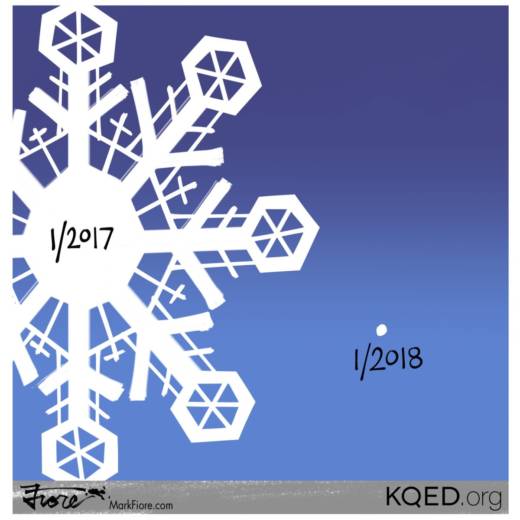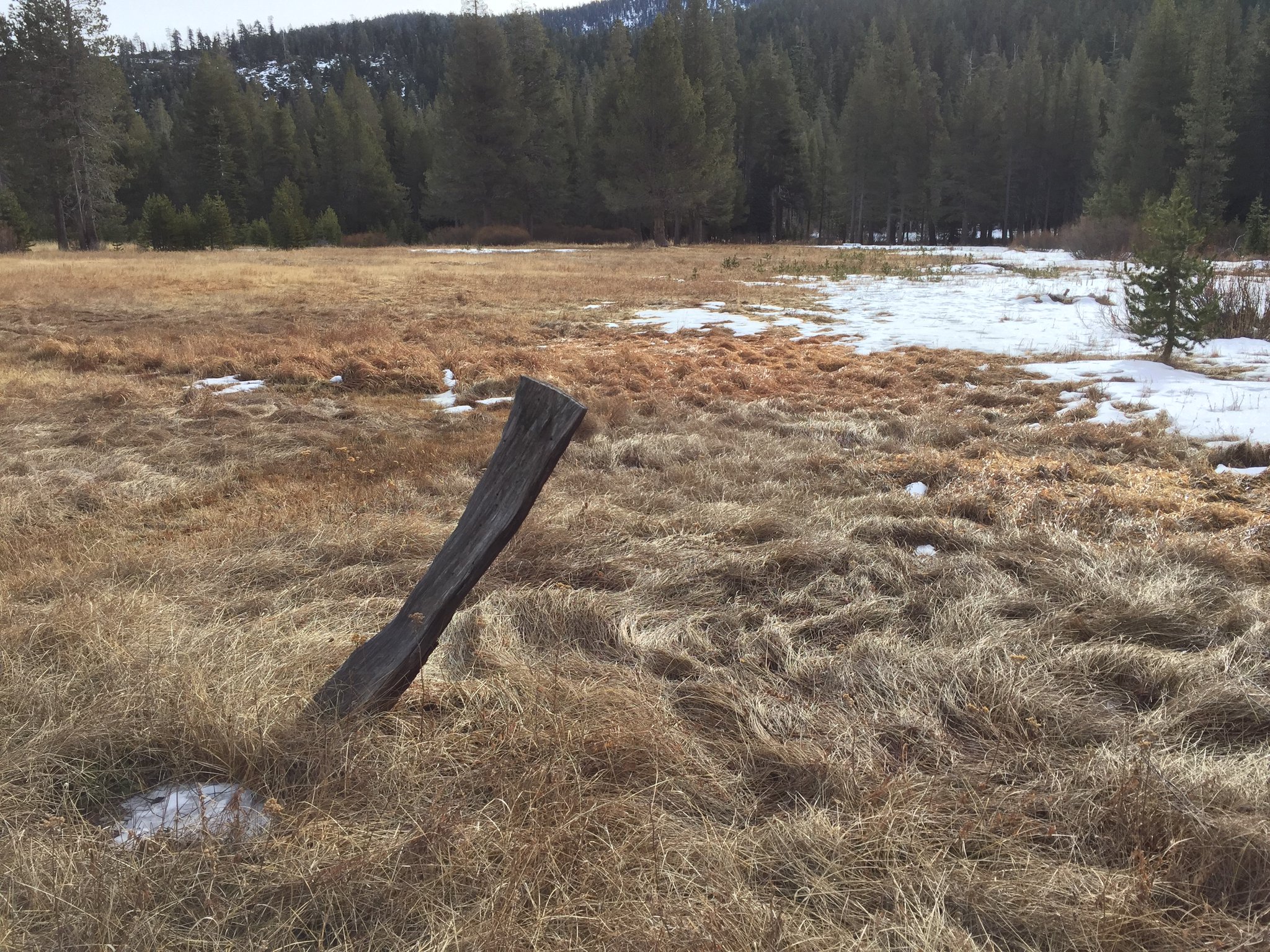It’s that time of year, when state water managers begin their series of monthly snow surveys — and the initial news is bleak.
The snow that’s presently sitting on the Sierra Nevada range is packing only 24 percent of the water content considered normal for this date. That’s worrisome as the Sierra’s “frozen reservoir” of snow typically holds about a third of California’s water supply.
“The snowpack is just not really building in the Sierra,” laments Nina Oakley, a climatologist with the Western Regional Climate Center in Reno.
There are two main culprits: first a stubborn bubble of high-pressure that was parked along the California coast for most of December, diverting potential storms around the state, into the Pacific Northwest and Alaska. That put a pinch on total precipitation for the state.
“November was a fairly good month,” recalls Cory Mueller, a forecaster in Sacramento. “We were running about normal, but then as we went into December we had that ridge build in and that really cut off the precipitation.”


